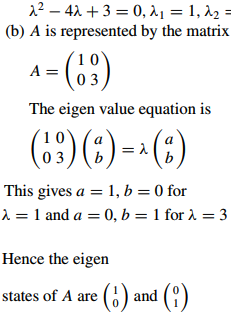(a) The wave functions of the hydrogen atom, or for that matter of any atom, with a central potential, are of the form

where m is an integer, positive or negative. So, under parity (p) operation, the function overall F(r,θ,ϕ), goes as

All the atomic functions with even values of l have even parity while those with odd values of l have odd parity. Considering that an integral vanishes between symmetrical limits if the integrand has odd parity, and that the operator of the electric dipole moment has odd parity, the following selection rule may be stated:- The expectation value of the electric dipole moment, as well as the transition probability vanishes unless initial and final state have different parity, that is linitial − lfinal = Δl = 0, 2, 4 ...
This condition for the dipole radiation emission is known as Laportes’s rule. Actually a more restrictive rule applies
Δ l = ±1
Note that even if the matrix element of electric dipole moment vanishes, an atom will eventually go to the ground state by an alternative mechanism such as magnetic dipole or electric quadrupole etc for which the transition probability is much smaller than the dipole radiation.
(b) The 2s state of hydrogen can not decay to the 1s state via dipole radiation because that would imply Δl = 0. Furthermore, there are no other electric or magnetic moments to facilitate the transition. However, de-excitation may occur in collision processes with other atoms. Even in perfect vacuum transition may take place via two-photon emission, probability for which is again very small compared to one-photon emission. The result is that such a state is allowed to live for considerable time. Such states are known as metastable states.